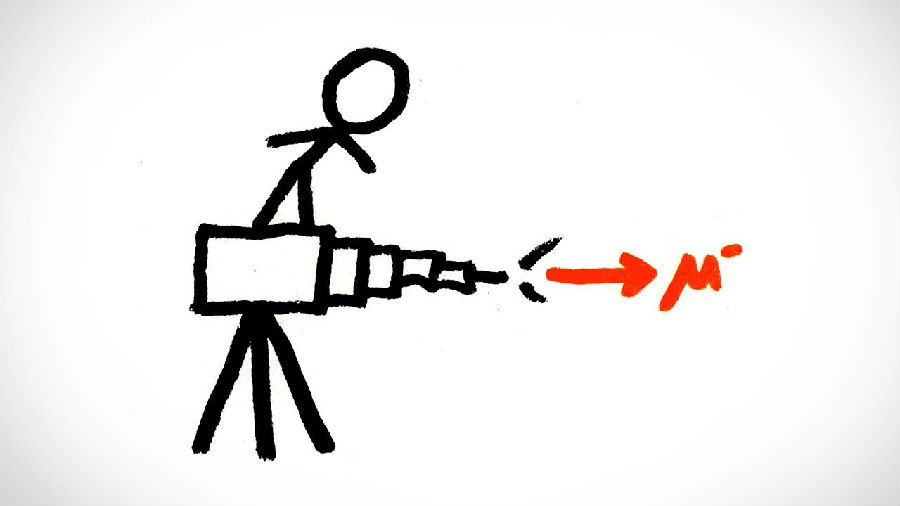Muons are fundamental particles in our universe that are essentially exactly the same as electrons,
渺子是宇宙中最基本的粒子,本质上和电子完全一样,
but heavier - 206.77 times heavier, to be precise.
但渺子比电子更重,准确地说,重了206.77倍。
Muons are super fascinating for a number of famous reasons,
渺子之所以如此令人着迷,有几个显著的原因,
including (and this is definitely an incomplete list) as an experimental test of time dilation,
包括(这绝不是一个完整的列表)作为时间膨胀的实验测试,
as a catalyst making fusion possible at room temperature,
作为一种催化剂,在室温下使聚变成为可能,
and that they can be used to make muonic versions of atoms,
并且它们可以用来制造原子的渺子版本,
like muonic hydrogen (with a proton and a muon, instead of a proton and electron).
比如渺子氢(有一个质子和一个介子,而不是一个质子和一个电子)。
But muons decay into an electron and some neutrinos after just a few microseconds on average,
但是,平均在几微秒后,渺子就会衰变为电子和一些中微子,
so they’re hard to store.
所以它们是很难储存的。
So to do experiments on muons, you need to have a source of muons on hand.
因此要用介子做实验的话,你需要有渺子的来源。
A small number of muons are produced naturally by cosmic rays striking our atmosphere,
一小部分渺子是宇宙射线撞击大气层时自然产生的,
but one of the best ways of consistently and reliably making a lot of muons
但是稳定可靠地制造大量渺子的最佳方法之一
is with a particle accelerator.
是使用粒子加速器。
First, you take hydrogen and you strip off the electrons,
首先,你把氢去掉,再把电子拿走
leaving you with protons.
只剩下质子。
Then you accelerate the protons really fast in an electric field
然后,你在一个电场中以极快的速度加速质子
(or a bunch of electric fields)
(或者在一堆电场中)
and crash them into some other atomic nuclei, like lithium or carbon or whatever.
使它们撞到其他的原子核上,比如锂或者碳或者别的什么。
The energy of the collision creates a whole mess of particles that goes flying out,
碰撞的能量产生了一大堆向外飞出的粒子,
but most importantly for our purposes,
但最重要的是,
it creates a particle called a pion
它产生了一种叫介子的粒子

- either a pion with positive electric charge made from an up quark and an anti-down quark,
-要么是一个带正电荷的介子,由上夸克和反下夸克组成,
or pion with negative electric charge made of a down and anti-up quark.
要么是带负电荷的介子,由逆夸克和逆夸克组成。
If the pions keep traveling in a vacuum so that they don’t bump into anything else,
如果介子一直在真空中移动,真空中它们不会撞到其他任何东西,
they’ll spontaneously decay after about 26 nanoseconds,
它们会在大约26纳秒后自动衰变,
most frequently turning into a muon,
最常见的是变成渺子,
which you can use for fusion, or testing special relativity,
你可以用它来进行核聚变,或者用来检测狭义相对论,
or making cool cloud chamber designs.
或者是设计很酷的云室。
And that’s how you make muons
这就是生成渺子的方法
- accelerate protons with enough energy that when they crash into other nuclei,
-以足够的能量加速质子,当它们撞击其他原子核时,
the energy of the collision creates pions, which then decay into muons.
碰撞产生的能量产生了介子,然后介子衰变为渺子。
Which, of course, after 2.2 microseconds on average, themselves spontaneously decay.
当然,在平均2.2微秒后,渺子会自动衰变。












